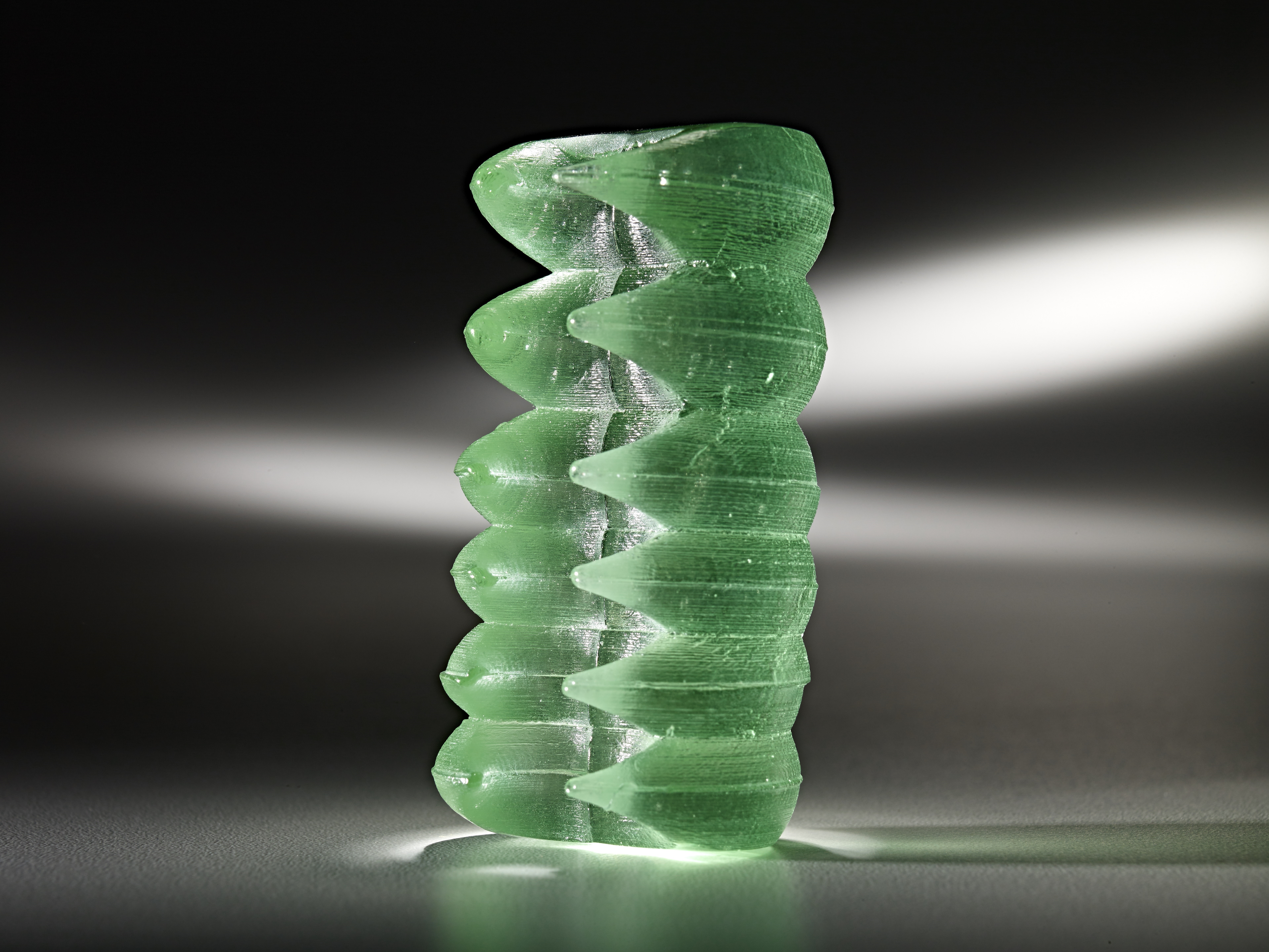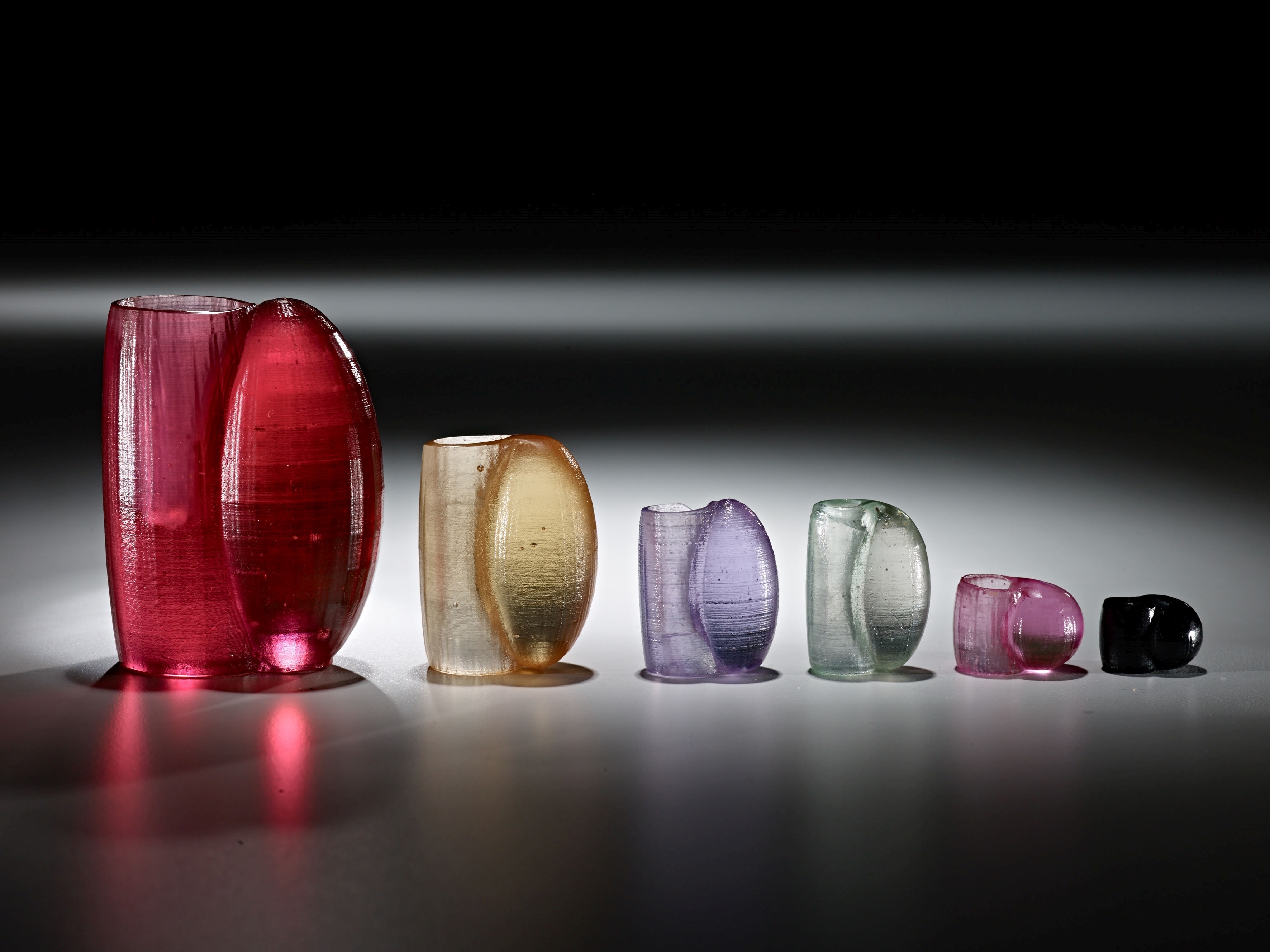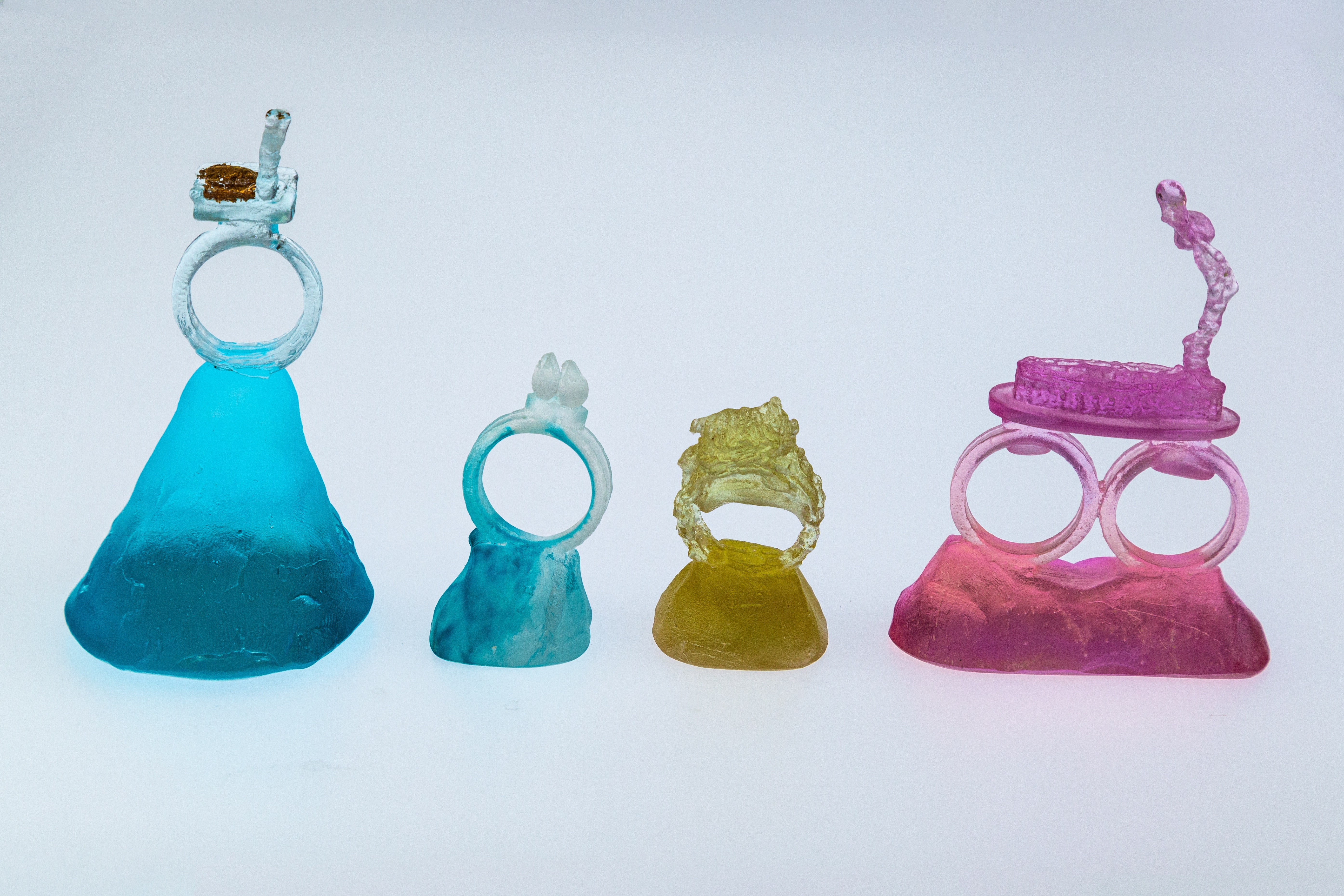Dr. Angela Thwaites
I make miniature monumental sculpture in glass exploring other worldly qualities from real world starting points. Preoccupied with mass, space and light, form is developed through drawing, model and mould making resulting in objects offering an intriguing, sometimes humorous angle on the power and fragility of nature and human vulnerability. Research for my PhD took two main making approaches, ‘orthodox’ and ‘improvisational’, combining CAD, 3D printing and glass casting in novel and accessible ways. Exploring what I describe as ‘the unmakeable’, generating monumental sculptural forms and structures in miniature scale cast glass which it would not be possible to make by hand methods alone.
Not only is the act of making a significant part of what it is to be human, but it connects deeply and indivisibly with nature and life itself: the subject matter from which my artwork is drawn. My aim is to connect the viewer through references, however subtle or implied, to the everyday sources used to develop ideas and to reconsider their significance. I exhibit regularly and internationally. Recent work loaned to the Museum of Glass, Tacoma, USA, is exhibited with a Lalique collection to stimulate debate on technologies and philosophies of contemporary glass making.
Thesis Title: Towards Making the Unmakeable: How 3D Printing Can Inform Kiln Formed Glass Practice in the 21st Century
This research considers the junction of hand and digital making in relationship to studio glass at a point where the role of making by hand is being questioned and re-evaluated in an expanded field of art and design.
Although working with glass requires both technical skill and knowledge, the primary drivers for innovation across history are aesthetic. This study is no different and motivation for it came out of artistic aims that were frustrated by the limitations of traditional methods and materials. Rather than reject existing practices, this research seeks to connect to and expand on the artistic legacy of Czech glass, which contributes to its roots. Through the reconsidering the importance of the history and influence of Czech cast glass this project addresses strategies for the future through exploration, experimentation and documentation of the development of new combinations of approaches, processes and materials. The aim is to extend the sculptural language of kiln formed glass through innovation and new content without losing the legacy of heritage.
The recent addition of digital technologies to a practitioner’s tool-kit has facilitated the creation of artwork in glass, which would be impossible to produce by hand making methods alone. Developments in software and desk top 3D printing are now providing easier access to digital design and making methods for artists and makers opening up new territories of form and content. Taking a practice based approach to combining analogue and digital methods for making artworks in cast glass this research explores forms and structures which would be impossible or nearly impossible to make by hand methods alone. It is this potential for the embodiment of what is termed ‘the unmakeable’ within this research that will drive forward kiln formed glass practices into the 21st Century and beyond.
This research contributes to the advancement of technological and aesthetic possibilities in kiln formed glass through the development of two main making approaches described as ‘orthodox’ and ‘improvisational’ which combine CAD, 3D printing and glass casting methods. The results of this research include bodies of original artworks as well as visual and written information and evaluation in the form of this thesis. Together these offer new knowledge to the field of Studio Glass where there is limited critical evaluation of the relationship between digital and analogue technologies applied to kiln formed glass.
Awarded Date: 01/11/2018
Principal Supervisor: Dr Jeffrey Sarmiento
Second Supervisor: Colin Rennie
Link to Thesis
Website


